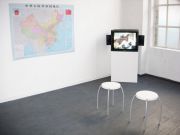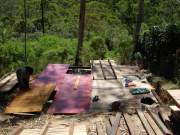Jenny Brown
Artist Essentials
- Contact Artist
- Artist Website
- Phone: 61 407677371
Katoomba, Australia New Zealand
Australia New Zealand
Jenny stakes out claims for both functional ends and aesthetic forms with her sophisticated multimedia practice that combines video, film, photography and installation, often with simple means and modes of expression. She favours research, production and engagement that take place within existing frameworks of culture and society to provide a more concrete way to activate art within the contours of formal systems and institutions in the world. This includes engaging with protocols, regulations and bureaucracies to address community concerns, environmental threats, social issues and political institutions. In many cases this more generally involves power and authority or justice and equity.






